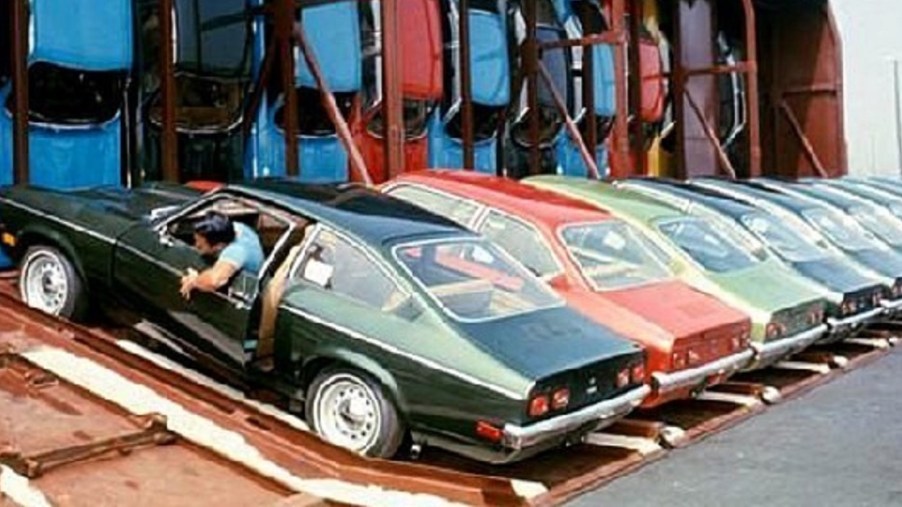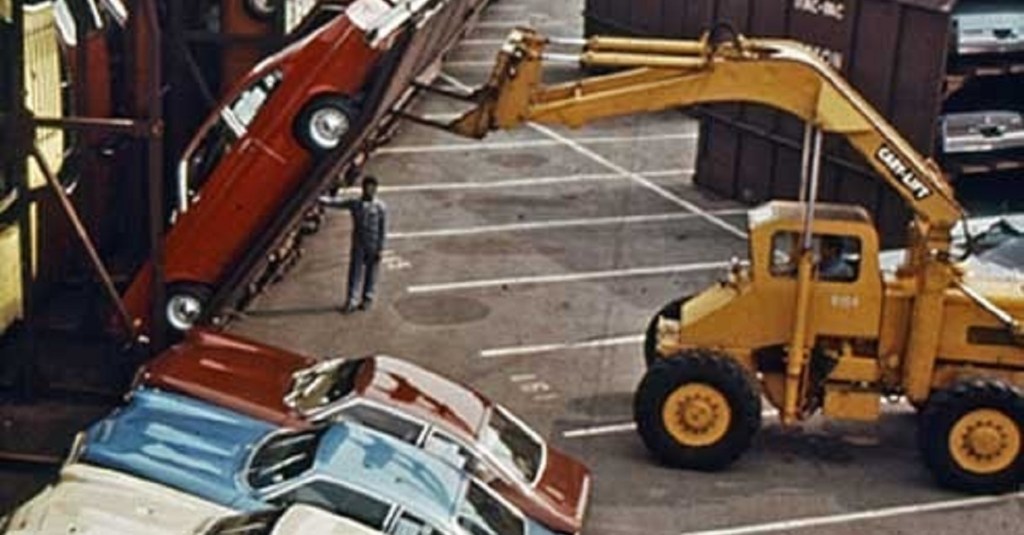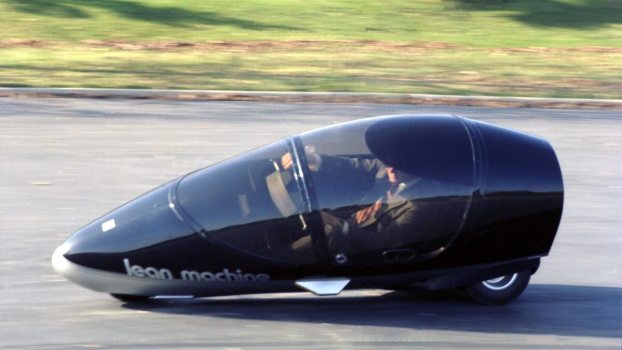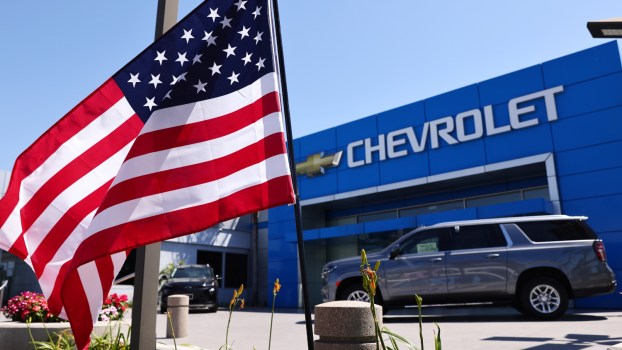
Ever Heard of a ‘Vert-a-Pac’? GM’s Coolest Invention Wasn’t a Car or Even a Car Part
Have y’all ever heard of the Vert-A-Pac? It’s OK, I hadn’t either. Well, you’ve certainly heard of its creator, GM. Of all of GM’s many incredible creations over the years, the Vert-A-Pac has to be the coolest, and that’s saying something considering the fact that GM is responsible for the Corvette, Firebird, Camaro, Wildcat, Bel Air, Chevelle, and many, many more.
What is the Vert-A-Pac?
The coolest GM product wasn’t a car, but it was invented in conjunction with the Chevrolet Vega. Until fairly recently, cars got to dealers mostly by train. However, unlike the enclosed Amazon train cars we see today, car hauler train cars were open. This left brand-new cars exposed to not only the elements but also thieves.
When the Vega came around, GM put its most clever engineers to work, and the idea for the Vert-A-Pac was born. Chevrolet needed the Vega to be a success. Part of how that could happen is keeping costs low. GM needed to keep the cost-per-Vega to around $2,000; otherwise, it wouldn’t make any money on them, so the entire assembly-line-to-dealership cost had to be carefully factored into the vehicle.
The Vega was also a perfect candidate for the Vert-A-Pac because they were more compact than many of Chevy’s other offerings. According to Interesting Engineering, the Vert-A-Pac was able to fit 30 Vegas in one enclosed train car. The walls of the train car would fold down and form ramps to load and unload the Vegas. Regular rail cars could only fit 18 cars, and they were exposed. This thing was a game-changer.
How did the Vert-A-Pac work?

Not only did the train car have to be specially engineered, but the Chevy Vega also had to be specially designed to be transported vertically.
The train publication Railway Age explains the engineering needed like this: “The Vega’s engineers had to design a special engine oil baffle to prevent oil from entering the No. 1 cylinder of the car’s inline-four engine. Batteries had filler caps located high up on the rear edge of the case to prevent acid spills. The carburetor float bowl had a special tube that drained gasoline into the vapor canister during shipment, and the windshield washer bottle stood at a 45-degree angle. Plastic spacers were wedged between the powertrain and chassis to prevent damage to the engine and transmission mounts. The wedges were removed when cars were unloaded.”
It’s crazy to think that Chevy designed major mechanical parts of the Vega only to serve how it was shipped. Then again, when you think about the Vega being engineered for shipping instead of driving, its terribleness begins to make sense. Despite where the Vega landed, when it was released in 1970, it was a big hit. However, it didn’t take long for consumers to hate the Vega.
The Vega and the Vert-A-Pac wasn’t long for this world
The Chevy Vega was produced from 1970-1977. The Vega has a sister car known as the Pontiac Astre were both discontinued at this time, and without them, the Vert-A-Pac died, too. Although the invention didn’t last, it was still super cool and maybe even the coolest thing GM ever made.





